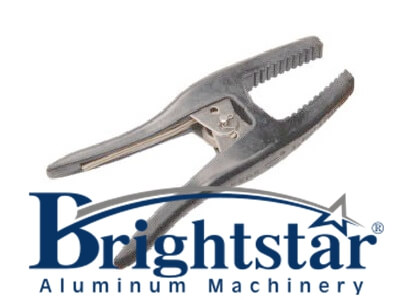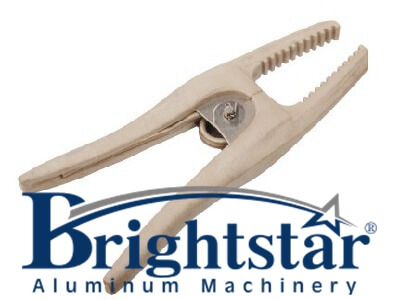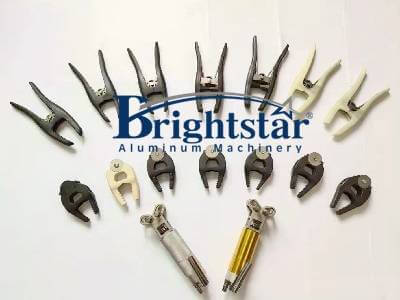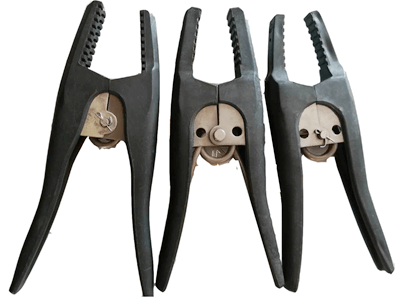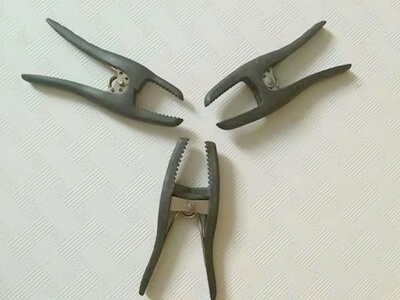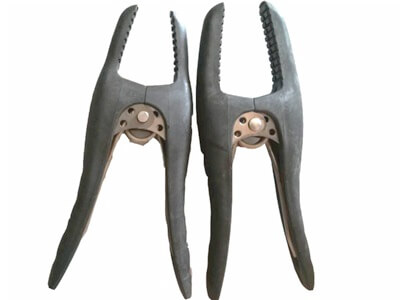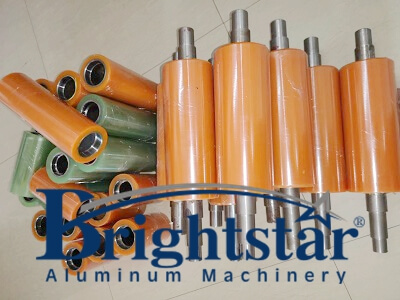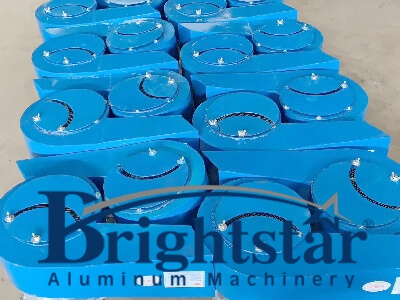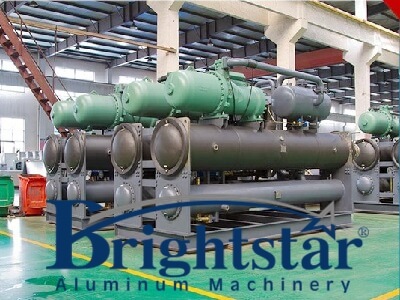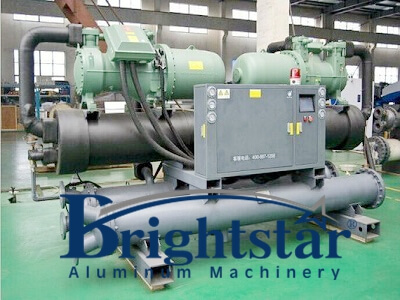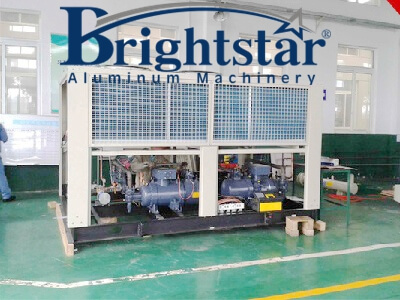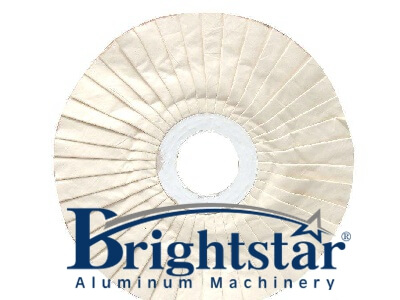
Aluminum profile anodizing clamp
Aluminum profile anodizing clamp
Aluminum profile anodizing clamp
Aluminum profile anodizing clamp
Quick anodizing clamp for aluminum profiles anodizing
Aluminum profile anodizing clamp, also known as the anodizing clamp plier, anodizing non-pneumatic clamp.
An anodizing non-pneumatic clamp is a manual device used to secure aluminum profiles during the anodizing process.
Anodizing non-pneumatic clamp, also known simply as a non-pneumatic clamp, is a type of clamp used in anodizing processes, it does not rely on pneumatic (compressed air) power for operation.
Instead, it may utilize mechanical, hydraulic, or manual mechanisms for clamping.
Unlike pneumatic clamps that use compressed air for actuation, non-pneumatic clamps rely on manual force for clamping and unclamping profiles.
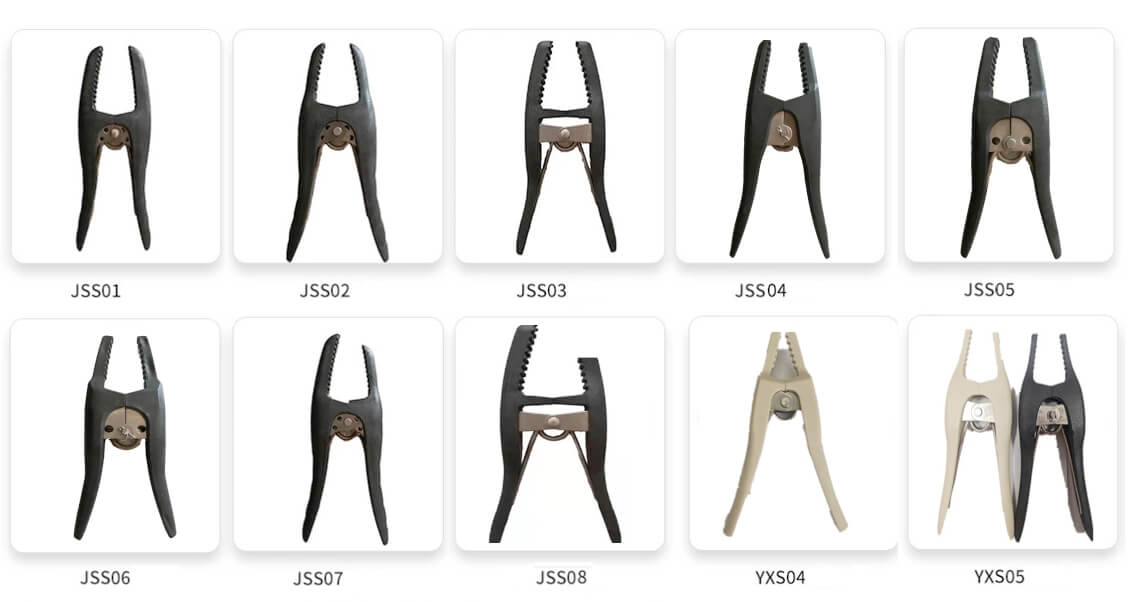
Anodizing Non-Pneumatic clamps model
Anodizing quick clamp is one kind of fastener that replaces aluminum wire banding, which can save time, improve work efficiency, and reduce costs.
Anodizing quick clamp fixed profiles can be acid and alkali-resistant, have high-temperature resistance, and have high reusability.
It can be used up to 3000 times or more (normal use, more than one year) and the spring wire of the quick clamp is imported 316L spring wire, which is extremely durable.
Temperature resistance can be as high as 270℃.
Features of aluminum profile anodizing clamp
Mechanical or Hydraulic Operation: Non-pneumatic clamps may use mechanical levers, screws, or hydraulic systems to apply clamping force to hold workpieces securely.
Manual Adjustment: Some no-pneumatic clamps may require manual adjustment for clamping pressure and positioning. This can involve turning screws or knobs to tighten or release the clamp.
Variety of Designs: Non-pneumatic clamps come in various designs to accommodate different applications and workpiece sizes. This includes toggle clamps, screw clamps, lever clamps, and hydraulic clamps, among others.
Durable Construction: Like pneumatic clamps, non-pneumatic clamps are often constructed from durable materials such as steel or aluminum to withstand the rigors of industrial environments.
Application of anodizing clamp
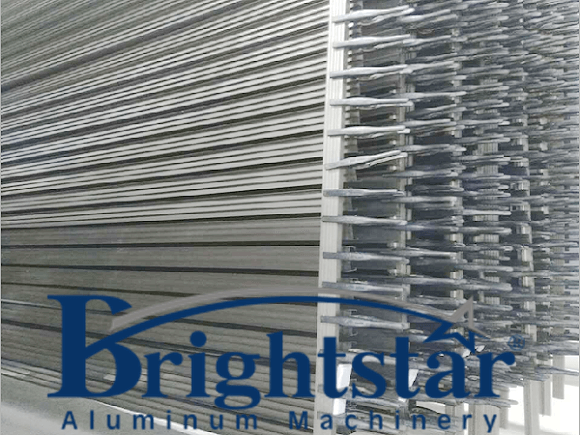
Aluminum profile anodizng clamp application
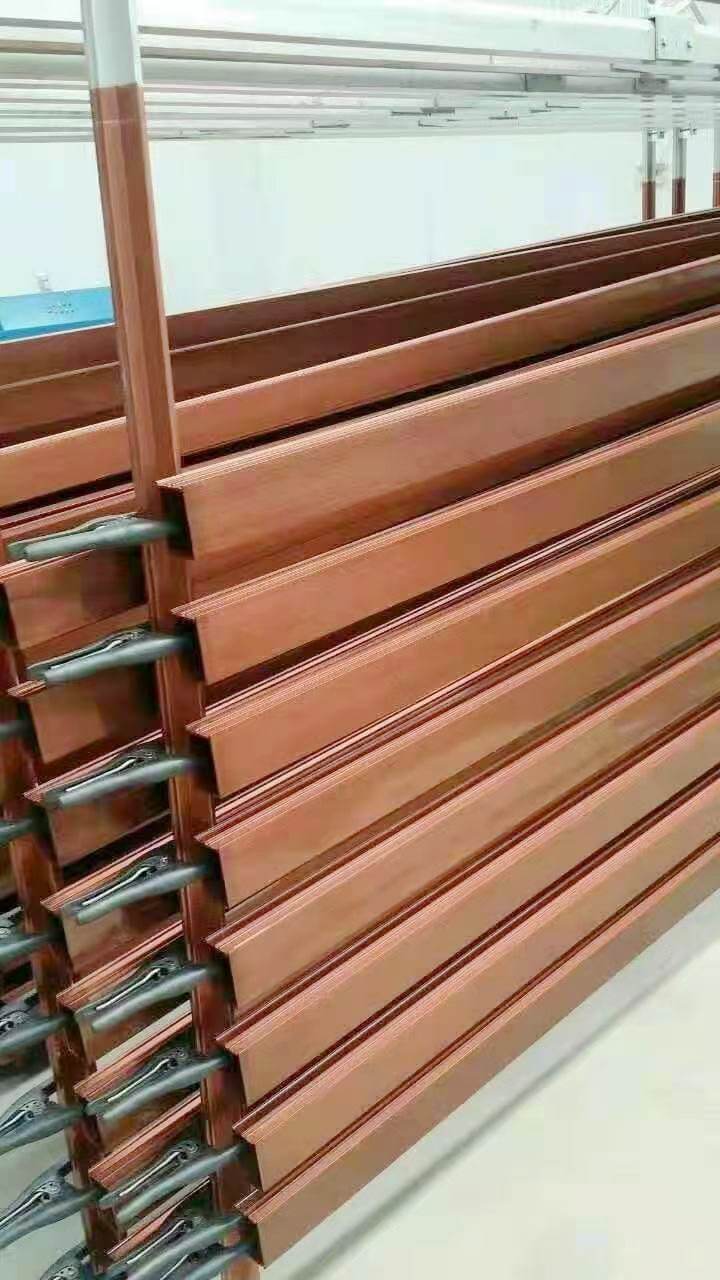
Advantages of anodizing clamp application
1. Cost-saving
The use of anodizing clamp only requires 0.001 USD production loss each time.
The anodizing clamp can be used more than 3,000 times.
Can be used for more than one year.
And if we use aluminum wire to fix aluminum profiles, aluminum wire cannot be reused up to 2 times, even if it can be used again after the recycling, and the loss cost is more than 25%.
2. Time-saving
The profile is fast fixed with an anodizing clamp.
It only takes 10 seconds for each loading, but if you use aluminum wire to fix the profile, the average loading time is more than 30 seconds. (Furthermore, the data does not include the time required for further fixing during the anodizing process.
3. Work efficiency improving
Only two workers are needed during the whole process of using the anodizing quick clamp to fix the profile.
Because the clamp has good stability, it will no longer need manual fixing during the anodizing and lifting process.
With aluminum wire fixing profiles, the entire process requires four employees, because two of the workers have to fix the aluminum wire again during the anodizing process.
4. No Need for Compressed Air
Unlike pneumatic clamps, no-pneumatic clamps do not require a source of compressed air for operation.
This can reduce the complexity of the setup and eliminate the need for air compressors and associated maintenance.
5. Lower Operating Costs
Since they do not rely on compressed air, no-pneumatic clamps can be more cost-effective to operate in the long run, as they typically consume less energy and require fewer components to function.
6. Simplicity
Non-pneumatic clamps are often simpler in design compared to pneumatic clamps, which can make them easier to maintain and repair.
They may also be easier to operate manually without the need for complex control systems.
7. Suitability for Certain Environments
In environments where the use of compressed air is not practical or permitted, such as in clean rooms or hazardous areas, no-pneumatic clamps offer a viable alternative for securing workpieces.
In summary, an anodizing no-pneumatic clamp provides a reliable and cost-effective solution for securely holding workpieces during industrial processes, offering simplicity, versatility, and durability without the need for compressed air.
